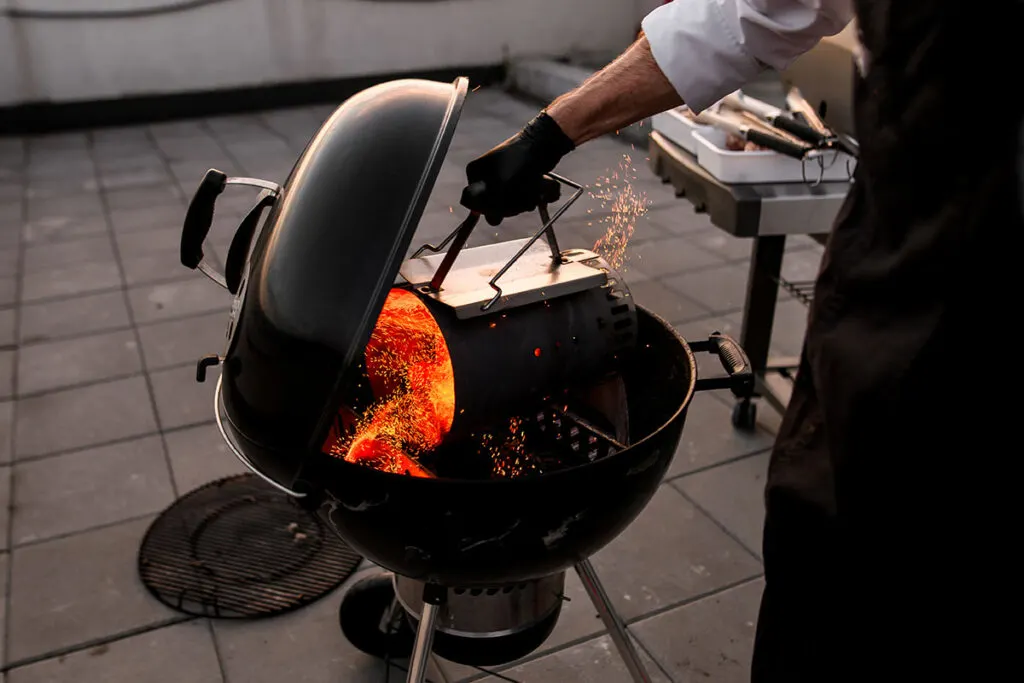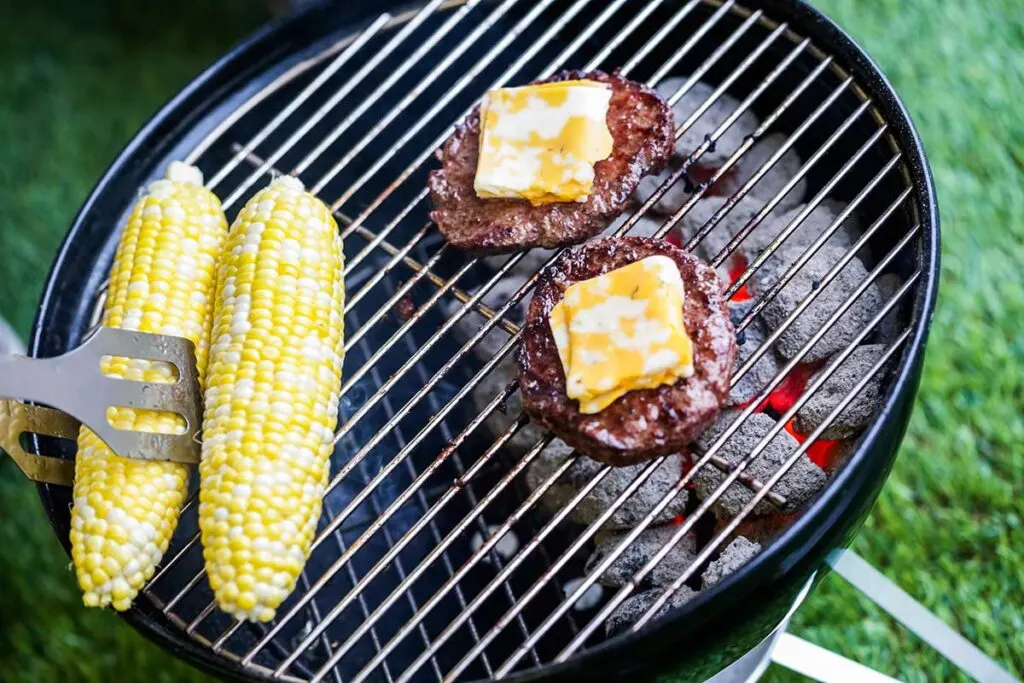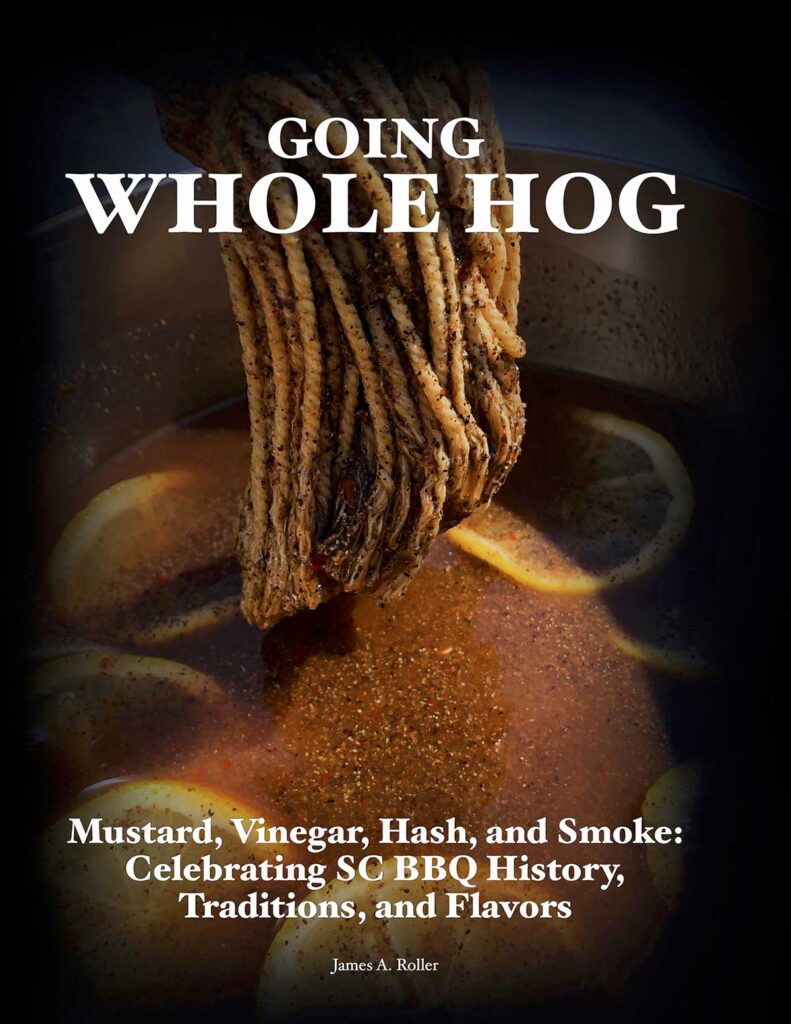
What does Banking the Coals mean?
“Banking the coals” is a popular technique used in barbecue that involves moving hot coals to one side of the grill or smoker. By doing this, two different temperature zones are created: a hot zone for searing and a cooler zone for slow cooking. This technique is often used when cooking larger cuts of meat that require both direct and indirect heat, allowing the meat to cook evenly without burning or charring. Overall, banking the coals is a useful technique that can help achieve excellent results when cooking on the grill or smoker.
Key Takeaways
- Banking the coals involves moving hot coals to one side of the grill or smoker to create two different temperature zones for cooking meat.
- This technique can help achieve even cooking and maintain control over temperature once you’re practiced with it.
- Banking the coals is particularly useful for cooking larger meat cuts that require indirect heat, such as brisket, pork shoulder, and ribs.
Understanding “Banking the Coals”
Banking the coals is a popular technique used in barbecue that involves moving hot coals to one side of the grill or smoker. By doing this, two different temperature zones are created: a hot zone for searing and a cooler zone for slow cooking. This technique is often used when cooking larger cuts of meat that require both direct and indirect heat, allowing the meat to cook evenly without burning or charring.
How to
To bank the coals, you will need a small metal rake or shovel to move the hot coals to one side of the grill or smoker. We suggest starting your coals in a charcoal chimney. That way, when the coals are ashen, you can simply pour them to one side of your grill.
Note: we highly recommend using heat and fire-resistant gloves when doing this, unlike our friend in the photos below.

You can also create a barrier using aluminum foil or heat-resistant bricks to keep the coals contained on one side. Additionally, you can use different amounts of charcoal to create different heat zones. A popular option is the Slow n Sear-type of insert available for many grills.

As Tuffy Stone, pitmaster and owner of Q Barbeque and Cool Smoke restaurant, advises, “You need to manage the temperature by moving the meat back and forth over the fire and the cooler side of the grill or smoker.”
This can take some experience to master.
Benefits
Banking the coals offers several benefits when cooking meat. By creating two temperature zones, known as 2-zone cooking, you can achieve even cooking and maintain control over the temperature.
This technique is particularly useful for cooking meat cuts that require indirect heat, such as brisket, pork shoulder, and ribs. These cuts benefit from slow cooking, which helps tenderize the meat and infuse it with flavor.
According to Myron Mixon, four-time world barbecue champion, banking the coals also offers the benefit of maintaining temperature control: “The trick is to control the temperature by adding more or fewer coals and moving them around as necessary.”
This technique can help you achieve a great cook for your meat, without drying it out or burning it.
Variations and Alternatives
Variations or alternatives to banking the coals include using a water pan, which can help regulate temperature and create a humid cooking environment. Another option is using a combination of charcoal and wood chips, which can add a smoky flavor to the meat.

As Aaron Franklin, pitmaster and owner of Franklin Barbecue, suggests, “banking your coals is the key to a perfectly cooked steak. By creating two different heat zones, you can sear your steak over the hot coals before moving it to the cooler side to finish cooking.”
This technique can help you achieve the right balance of char on the outside and tenderness on the inside. For long cooks, you might consider the variation of the snake method (aka fuse method).
Drawbacks and Risks
While banking the coals offers many benefits, there are potential drawbacks and risks. These include uneven heat distribution, the risk of fire if coals are not managed properly, and the difficulty in achieving the right balance of direct and indirect heat.
- Small cuts of meat: This technique is primarily beneficial for larger cuts of meat that benefit from slow cooking. For smaller cuts or delicate proteins, direct heat cooking methods may be more appropriate.
- Limited grill space: If you have a small grill or limited space, creating distinct heat zones for banking the coals may be challenging, resulting in uneven cooking.
- Uneven heat distribution: this technique naturally leads to uneven heat distribution across the grill, resulting in areas that are too hot or too cool. This can cause inconsistent cooking and may result in undercooked or overcooked sections of the food. Use the zones to your advantage but be aware of the pitfalls.
- Difficulty achieving the right balance: Achieving the perfect balance of direct and indirect heat can be challenging, especially for beginners. It may take practice to find the right balance for different types of meats and cuts.
- Potential for overcooking: Due to the longer cooking times associated with banking the coals, there is a risk of overcooking certain cuts of meat or drying them out. Monitoring the internal temperature of the meat and adjusting the cooking time accordingly is crucial to prevent overcooking.
- Burn risk during coal manipulation: When moving the hot coals or adjusting the heat zones, there is a risk of burns or injury. It’s important to use proper tools, such as long-handled tongs or fire-resistant gloves, and exercise caution when handling the coals.
Best Cuts of Meat for Banking the Coals
Banking the coals is particularly useful for cooking meat cuts that require indirect heat, such as brisket, pork shoulder, and ribs. These cuts benefit from slow cooking, which helps tenderize the meat and infuse it with flavor. The technique is also useful for meats that benefit from searing before slow cooking, such as steaks or chops.
According to Aaron Franklin, banking the coals is also great for cooking vegetables that require longer cooking times, such as potatoes, onions, and corn. This allows everything to be ready at the same time, without overcooking or undercooking any of the components.
Tips
- Use a meat thermometer to ensure that your meat is cooked to the proper temperature, as this can vary depending on the type of meat and cut.
- When using a water pan, make sure to keep it filled with water throughout the cooking process to prevent it from drying out.
- If you’re using wood chips, soak them in water for at least 30 minutes before adding them to the coals to prevent them from burning too quickly. Otherwise, consider wood chunks.
- Don’t be afraid to experiment with different types of wood chips or charcoal to achieve the flavor and texture you’re looking for.
- Keep a close eye on the coals to prevent flare-ups and to ensure that the temperature remains consistent throughout the cooking process.
As Myron Mixon notes, “The more you practice, the better you’ll get. It’s all about finding what works best for you and your equipment.” With a little time, you’ll find banking the coals to be an excellent tool in your BBQ arsenal.

